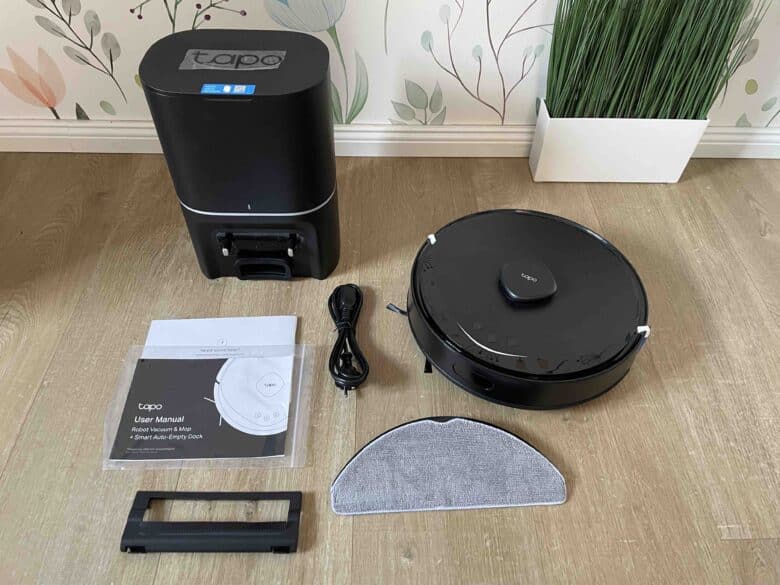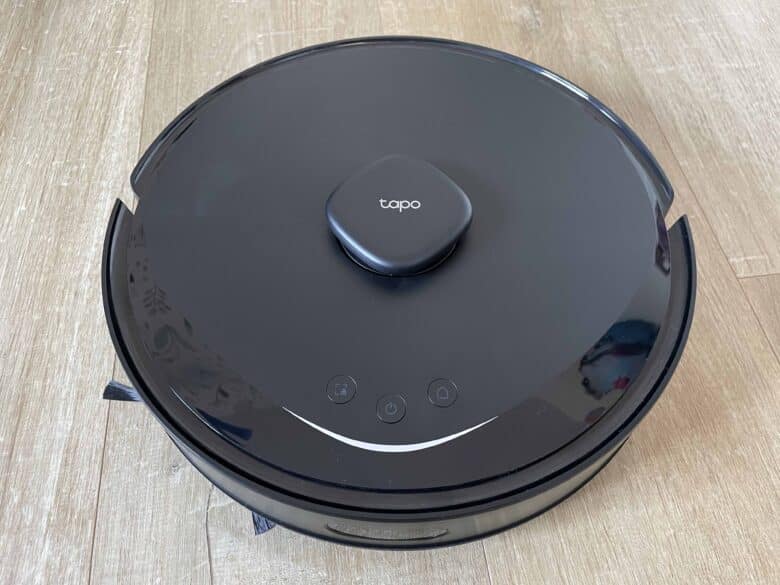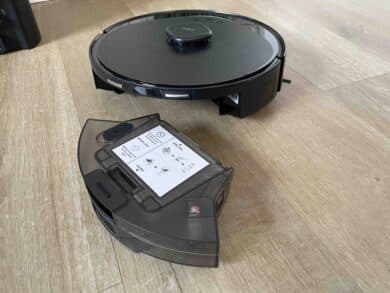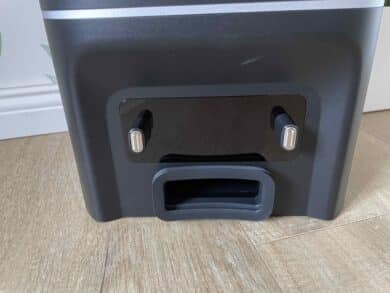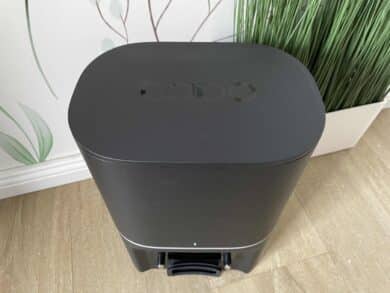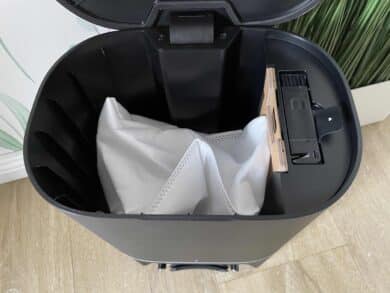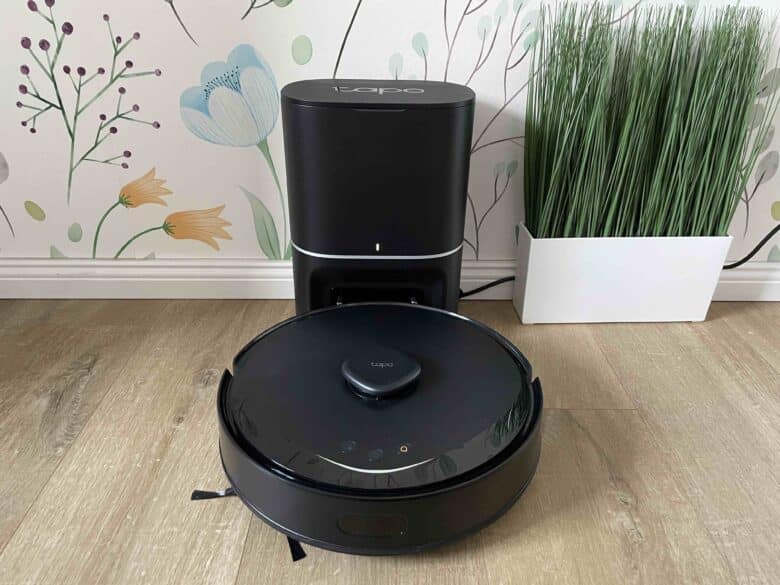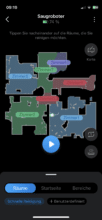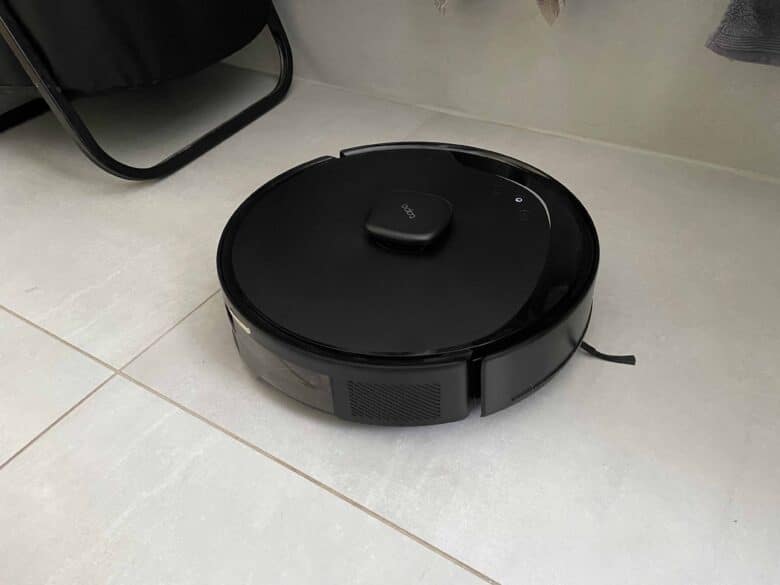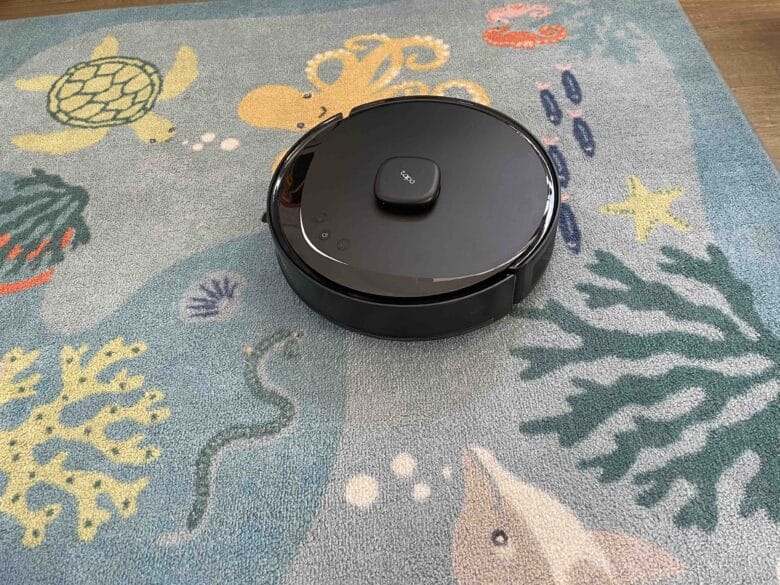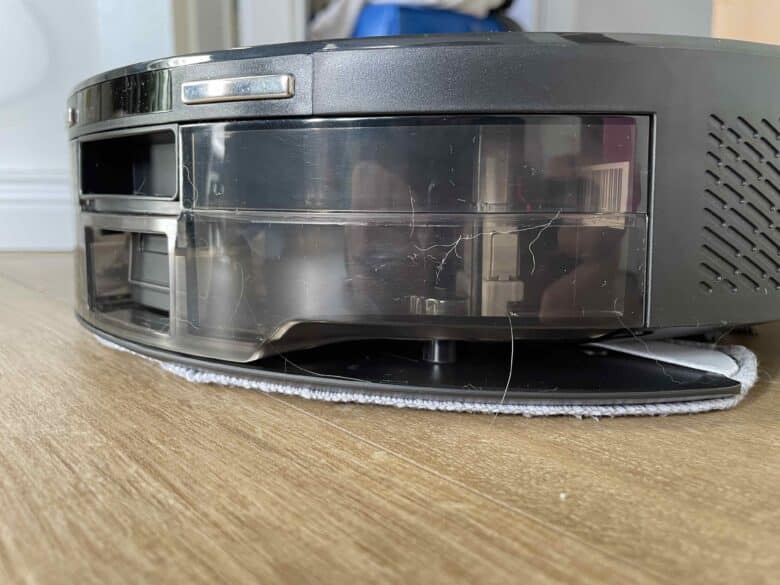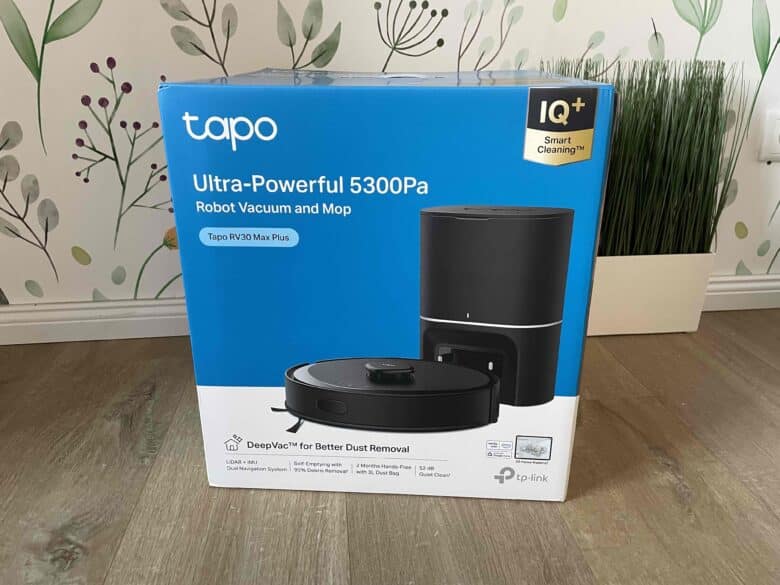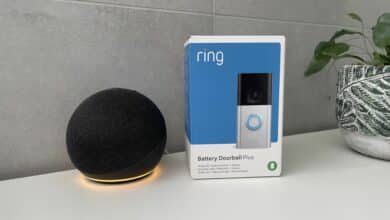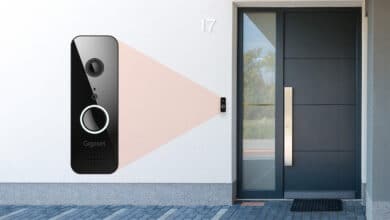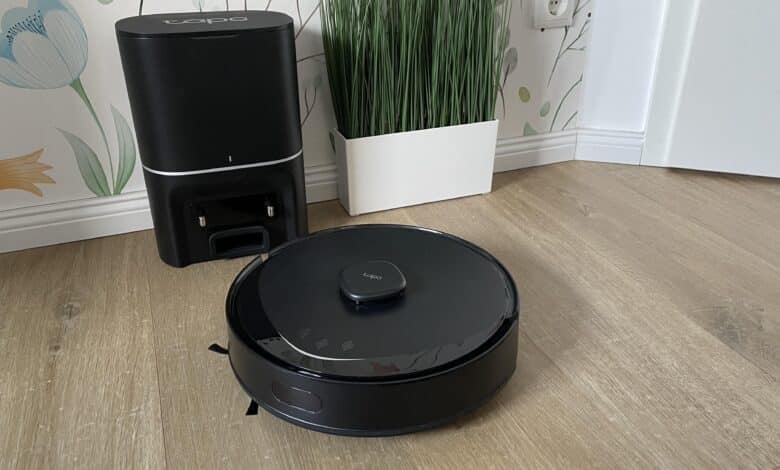
Most people will probably think of WiFi routers and other accessories for the home network when they hear the name TP-Link. However, the LAN and WLAN expert also has other qualities. With its Tapo brand, the company is also playing an increasingly important role in the field of smart home systems. In addition to smart video doorbells such as the D235 (review, € 129.00 *), the portfolio also includes powerful surveillance cameras such as the C425 (review, € 88.00 *). With the RV30 Plus (review, € 574.74 *), TP-Link even has a robot vacuum in its portfolio. And this is now getting an upgrade. In the TP-Link Tapo RV30 Max Plus test, we took a closer look at the model with stronger suction power at a lower price.
Technical data
| Model | TP-Link Tapo RV30 Max Plus |
| Suction power | 5300 Pascal |
| Navigation | LiDAR + IMU Dual Navigation |
| Suction station | – 17000 Pascal suction power – 3 liter dust bag |
| Suction modes | 5 levels |
| Capacity dust container vacuum robot | 300 ml |
| filter | HEPA FIlter (H11) |
| Mopping function | – Mop cloth – 300 ml water tank – 3 levels |
| App support | Yes |
| Dimensions | – Robot: 330 × 100 mm – Suction station: 228 × 164 × 330 mm |
| Connectivity | – IEEE 802.11 b/g/n (2.4 GHz band) – Bluetooth 4.2 – Matter standard |
| Voice assistants | Amazon Alexa and Google Assistant |
| Price | € 249.00 * |
Scope of delivery
- Robot vacuum ×1 (contains HEPA filter ×1 and side brush ×1)
- Auto-emptying station ×1 (contains disposable dust bag 3L ×1 and cleaning brush ×1)
- Mop attachment ×1
- Power cord ×1
- User manual
TP-Link Tapo RV30 Max Plus Test: Robo with a familiar look
Visually, hardly anything has changed compared to the basic version. At least if you ignore the color and a few optical gimmicks. While the RV30 Plus still used a combination of black and white, the Max version comes in matt black.
This not only suits the robot vacuum very well, but also feels quite high-quality. TP-Link uses high-quality plastic for both the robot and the suction station, which makes a robust impression.
Apart from the color scheme and the missing wave pattern on the top, pretty much everything has remained the same when it comes to looks. At the top is the obligatory LiDAR turret, which is used for navigation. There are also a total of three buttons here that can be used to start and stop the vacuum cleaner or send it home, as well as to start spot cleaning.
While the obstacle detection technology is located at the front, the water tank, which can be installed and removed in a flash, is located at the rear. If you turn the vacuum cleaner upside down, the underside is also reminiscent of the basic version.
In addition to the non-liftable wiping cloth, the main brush works together with a side brush. I don’t want to criticize TP-Link too much for not using a fully rubberized main brush. After all, we are in the low-price class here.
TP-Link Tapo RV30 Max Plus test: Suitable suction station
The suction station also looks like a different colored version of the RV30 Plus. The matt black design also suits it very well. A lid on the top provides access to the 3-liter dust bag inside. This should have so much capacity that you only need to insert a new one every 60 days or so.
An inconspicuous LED on the front provides status information about the smart household helper. It works in the same way as a conventional vacuuming station. Once the robot vacuum cleaner has finished its cleaning tour, it returns to the base.
Once there, the collected dirt is vacuumed out of the dust container. The system scores with a suction power of a whopping 17000 Pascal. This means that hardly any residue remains inside the dust container. The RV30 Max Plus battery is also charged at the station’s docking point.
TP-Link Tapo RV30 Max Plus test: Navigation
Just a few years ago, LiDAR navigation was reserved exclusively for high-end robot hoovers. The Tapo RV30 Max Plus is an excellent example of how inexpensive devices can now also offer reliable laser navigation. The advantages over optical navigation technologies such as those used on board a Yeedi Vac Station (review, € 665.33 *) are obvious. Firstly, orientation in poor lighting conditions.
As lasers can carry out their measurements without restriction even in absolute darkness, the RV30 Max Plus works equally reliably both during the day and at night. What’s more, it takes its measurements pleasingly quickly. This is evident from the fact that the smart household helper does not move around the home at a snail’s pace. The first mapping of my home was completed after just a few minutes. The end result was quite good, but in no way comparable to that of modern robots such as a Dreame L10s Pro Ultra Heat (review, € 959.99 *).
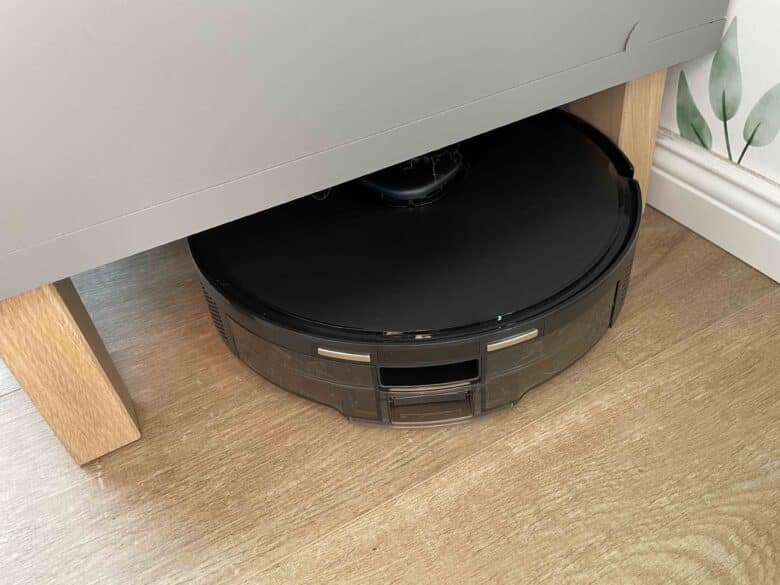
The Tapo simply lacks high-end features such as subsequent image processing by AI. However, the floor plan was precise enough to be able to use individual adjustments such as no-go zones or invisible walls. While navigation worked well, obstacle detection was less than satisfactory. Before you let the Tapo drive through your home, you should therefore definitely tidy up again and, above all, pick up small items from the floor.
Otherwise the robot will overlook them. In the test, it didn’t just get caught in a power cable. My offspring’s toys were also not safe. However, it should be said that even much more expensive robot hoovers have problems with obstacle detection. However, if this is important to you, you will now find what you are looking for on the diverse market. The Narwal Freo Z Ultra (review, € 949.00 *) made me think that this could soon change, thanks to its outstanding object recognition.
TP-Link Tapo RV30 Max Plus Test: Tapo App
Of course, TP-Link flexes its muscles again with the Tapo app. I particularly like the clear design here. Even newcomers will quickly find their way around the software. This starts with the setup. The smart household helper is in your own network in a flash. Foolproof illustrated instructions help the user.
Once set up, you can use the app to make various settings. For example, you can edit the map that the Robo has created of the apartment. If the automatically generated floor plan is not correct, you can easily make changes. Incidentally, a total of three different floors can be saved.
Furthermore, you can control the robot during its cleaning tour and see in real time on the map where it is currently vacuuming or mopping. With the help of a schedule, users can also specify the times at which the robot should be used. The app can also be used to regulate cleaning details.
For example, you can select how the vacuum cleaner should behave on carpets. You can also choose between five different suction levels and three different mopping levels. Incidentally, the Tapo also offers support for Amazon Alexa and the Google Assistant and is also compatible with the Matter standard.
TP-Link Tapo RV30 Max Plus test: suction power
If you’re wondering how the new version of the vacuum cleaner got the nickname “Max”, it’s worth comparing it with the technical data of its predecessor. While the basic version only had 4200 Pascal to offer, the Max version comes with a significantly better 5300 Pascal. This means that the model is still a long way behind top models such as a Roborock Qrevo Master (review, € 1,299.00 *) with 10000 Pascal, but this also costs almost four times as much.
In practice, I have hardly missed any performance with the TP-Link. At least on hard floors, the smart household helper cuts a fine figure. This is probably where the DeepVac technology pays off. TP-Link relies on newly designed air intake angles. According to the manufacturer, this should ensure a dust collection rate of over 97%. I cannot exactly verify whether this is actually the case. Unfortunately, the main brush uses classic bristles, which pet owners should bear in mind. Hair tends to get tangled up here.
What is certain, however, is that the Tapo performed well on my vinyl, laminate and tiled floors. It also went through the rooms as planned and never used the chaos principle. As a result, there were hardly any uncleaned areas. The situation was different on carpeted floors. Here you could feel that the smart household helper lacked a little power. Short-fiber carpets are still manageable. However, if you have long-fiber models at home, you should look for a vacuum cleaner with more power.
Incidentally, the Tapo offers various carpet modes. With the help of the carpet sensors on the underside, the RV30 recognizes whether it is driving over a carpet and then reacts accordingly. In the standard setting, it increases the suction power to the maximum level as soon as a carpet is encountered. Alternatively, you can have it avoid carpets, which is particularly advisable when the mopping unit is fitted.
TP-Link Tapo RV30 Max Plus test: Mopping performance
The mopping function of the Tapo RV30 Max Plus is not really worth mentioning. After all, the smart home brand from TP-Link only relies on a rigid wiping surface on the underside. There is no vibration function like that offered by a Roborock Q8 Max+ (review, € 569.00 *). The results are correspondingly unclean. The damp cloth may be able to pick up residual dust from the floor, but even light soiling can be too much of a challenge for the system.
There is a choice of three different intensity levels for the mopping process. The higher the level, the greater the flow rate from the 300 ml water tank to the mop cloth. In view of the poor mopping performance, this feature is more of a gimmick than a serious feature, as is the case with the basic version. However, it is certainly better than no wiping function at all.
Conclusion
The Tapo RV30 Max Plus from TP-Link impresses in the test above all with its good cleaning performance and reliable navigation. With a suction power of 5300 Pascal, it clearly outperforms its predecessor model and achieves a good cleaning performance on hard floors. However, the vacuum cleaner reaches its limits on carpets, especially long pile. Although the automatic increase in suction power on carpets is a useful feature, it lacks the overall power to reach deeper-lying dirt.
The appliance’s mopping function, on the other hand, is rather weak. It therefore serves more as a supplement to the suction power than as a truly effective feature. The included suction station scores with a high suction power of 17000 Pascal and a 3-liter dust bag, which in turn ensures ease of use. After all, you only have to dispose of the collected dirt every 60 days or so. Navigation using LiDAR works precisely and quickly, so that the robot vacuum cleans efficiently.
However, obstacle detection could be improved and smaller objects in particular are often overlooked. The TP-Link app offers comprehensive control options, from map creation and schedules to the integration of voice assistants such as Alexa and Google Assistant. The most important selling point of the Tapo RV30 Max Plus is its price anyway. I don’t know of any robot vacuum that offers a comparably good overall package at an RRP of just under 250 euros. It is therefore particularly suitable for anyone looking for a solid robot vacuum for a low price.
TP-Link Tapo RV30 Max Plus
Design & processing
Ease of use
Cleaning performance
Equipment
Price-performance ratio
88/100
The TP-Link Tapo RV30 Max Plus offers good suction power and modern navigation at a fair price. However, the wiping function is disappointing.



